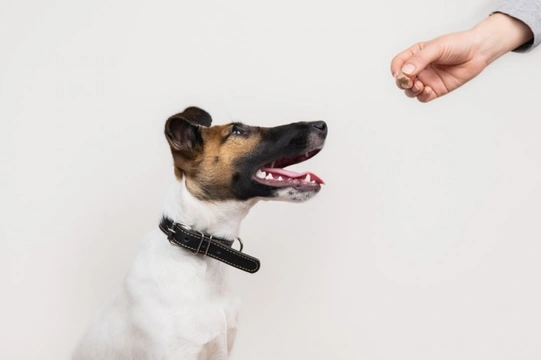
Five ingredients in dog treats that you’ll want to avoid
Dogs love food of all varieties, and few things will catch a dog’s attention and motivate them more than the rustling of a bag of treats, or the sound of the cookie jar being opened!
Most of us give our dogs a few treats every day, and it is important to measure these out and keep a check of how many treats our dogs have, so that they don’t start piling on the pounds or failing to get the appropriate level of nutrition from their proper meals.
Treats can be a powerful motivator for training, a good way to get your dog to pay attention if you need them to do something and of course, a way to show your dog how much you love them in a language that they very firmly understand and respond to.
However, all dog treats are not created equal, and just as feeding too many treats can be bad for your dog or make them gain weight, what goes into your dog’s treats can be hugely variable too, and there are some ingredients that you should check for and avoid.
These are the types of ingredients that constitute substances that dogs simply don’t need, that can be problematic, or that are in some cases not actually digestible, and are added to the treats just to extend their shelf life or change their appearance.
With this in mind, this article will tell you five ingredients to look out for in commercially bought dog treats that you’ll want to avoid, and why. Read on to learn more.
Colourants like tartrazine and sunset yellow
Colourants are added to many foods aimed at both humans and dogs, to produce a specific appearance, or make the food look more appealing to human eyes. In some cases this is obvious – like when we buy sweets that are bright orange or blue, for instance – but not all dog owners know that a great many types of dog treats contain colourants too.
When you think about this, it’s pointless – dogs can only see colours in the blue, yellow and greyscale spectrum, and colour isn’t something that they use to assess the desirability of food at all.
Dog treats don’t need any type of colourants in them, but it is particularly a good idea to steer clear of treats that contain artificial colourants.
You can spot artificial colourants by looking out for “E numbers” (not all E numbers are colourants, but all E numbers are best avoided anyway!) And specific, commonly used artificial colourant names that you’ve probably seen multiple times in other products too, like tartrazine and sunset yellow.
Artificial preservatives like BHA, BHT and sodium nitrate
Preservatives help to extend the shelf life of dog treats, and unless you make your treats yourself at home in small batches or buy treats from dedicated dog treat bakeries and businesses that are designed to be used within a couple of days, your dog’s treats will contain preservatives.
However, some preservatives are better than others, and ones that are best avoided include ingredients like BHA, BHT, sodium nitrate, potassium sorbate, calcium propionate and ethoxyquin. Some of these artificial preservatives are quite nasty, and the latter has even been associated with various cancers and liver and kidney diseases in animals too.
Artificial humectants and moisture agents like propylene glycol
Humectants are agents that provide moisture or help a food to retain moisture; and they’re found in all sorts of products, like the cakes and muffins in your favourite coffee shop chain that somehow stay fresh and moist after sitting all day unwrapped in the chiller cabinet!
Avoid artificial humectants like propylene glycol, and if you feed moist treats, look instead for ingredients with more natural alternatives like molasses or vegetable glycerine instead.
Corn syrup and other sweeteners
Sweeteners are something to avoid in general in dog treats, as a protein-rich treat is just as delicious and far healthier for your dog than something overly sweet. If your dog’s favourite treats do contain sweeteners however, try to avoid high-fructose products like corn syrup.
Corn syrup provides no nutritional value and will make your dog gain weight, as well as causing energy peaks and troughs that can lead to bouts of hyperactivity, followed by flagging later on.
Wheat
Finally, wheat is a natural ingredient but one that is not necessary or beneficial in either dog food or dog treats. It is used solely as a filler and bulking agent, and dogs don’t digest and get any nutritional value from wheat; it is simply passed from the body as waste.
Wheat is also one of the more common canine allergens that can affect dogs that are sensitive to food allergies as many English bulldogs are, and even if your dog isn’t allergic to wheat and suffers no ill effects of eating it, it might increase their stool output as they simply don’t need it in their diets!



